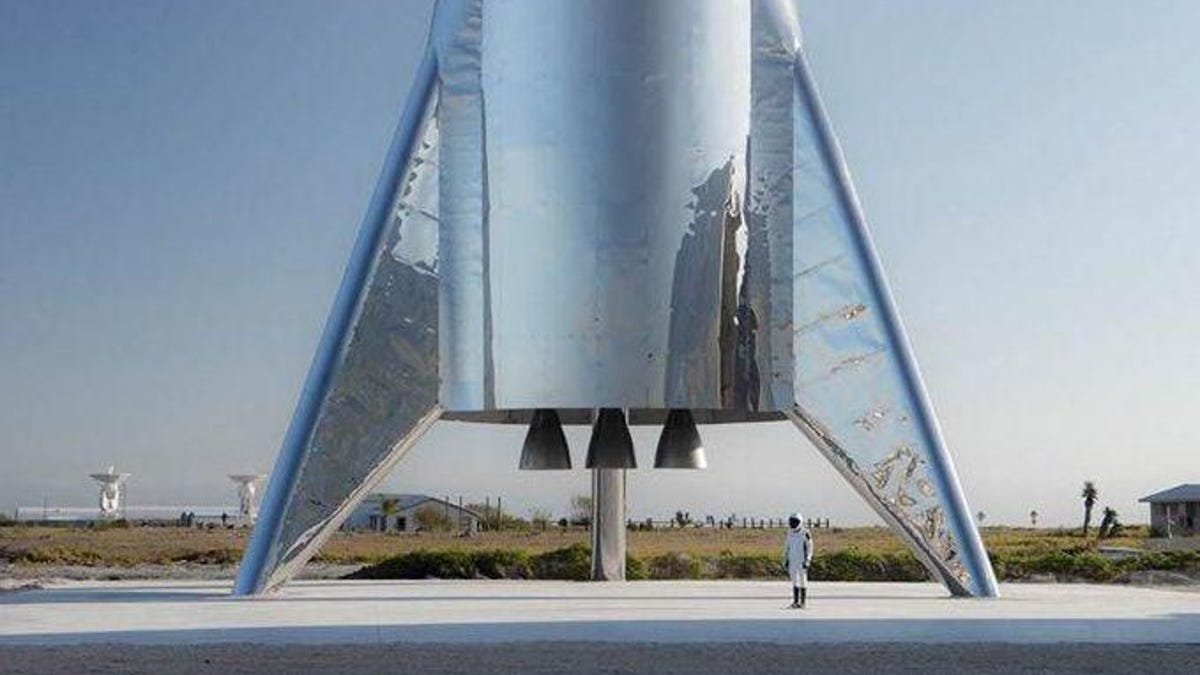Elon Musk, SpaceX aim for post-flames Starship hover test next week
After setting off a fireball and hitting delays, the "Starhopper" is almost ready to explore life off the ground.

The SpaceX Starship "hopper" prototype has a big test set for Tuesday.
Ever since SpaceX founder Elon Musk unveiled the bright and shiny Starship prototype, space fans have been aching for it to take off in a blaze of glory. It got a little too close to that with a test-fire that set off a fireball on Tuesday.
Musk was undeterred, saying SpaceX still hopes the current Starship prototype, a "hopper" vehicle built for short test flights, will be able to lift off for a major hover test next week. He tweeted on Thursday that the flames came from a post-test fuel leak that caused no permanent damage to the stainless-steel vehicle, known by its "Starhopper" nickname.
Everyday Astronaut captured footage of the test fire and the "unexpected fireball" at the SpaceX facility in Boca Chica Village, Texas where Starship is under development.
Musk first took to Twitter last week to share the original hover-test schedule. "Raptor engine mounted on Starhopper. Aiming for hover test Tuesday," he tweeted using the nickname for the Starship "hopper" prototype. Tuesday, July 16 was also the 50th anniversary of NASA's launch of the Apollo 11, which carried humans to the surface of the moon in 1969.
Raptor engine mounted on Starhopper. Aiming for hover test Tues.
— Elon Musk (@elonmusk) July 12, 2019
As it turned out, July 16 will not also be remembered as the day for Starhopper's first hover test. Musk tweeted an update on Tuesday, "Won't be today, hopefully tomorrow." That was just prior to the eye-popping test fire.
A previous test in April involved Starship trying out a tiny liftoff with a single Raptor engine providing the power. This time, Starhopper will aim to reach over 65 feet (20 meters) off the ground and move a little sideways, Musk tweeted. Musk said a livestream of the event would be available.
If the hover test is successful, it will put SpaceX on the path to a much more ambitious goal of reaching 12 miles (20 kilometers) within a few months.
Musk must be feeling confident about the testing. He already announced plans for a presentation about the Starship in late July after the hover test, where we could get updates on SpaceX's plans to fly around the moon with a group of artists in 2023.
SpaceX fans have been keeping an eye on the work in Texas, capturing video of the Raptor engine's arrival and its mounting to the Starhopper last week.
Musk also tweeted that the company has changed the rocket design "quite a bit" and that he will reveal more at the presentation. Starship is expected to eventually launch with multiple Raptors, but just one is enough for initial testing. SpaceX will aim to keep it above 50% throttle for this upcoming flight, according to Musk.
Starship is meant to be an all-purpose, next-generation spaceship capable of servicing missions to Earth orbit as well as more distant destinations. SpaceX's grand goal is to send a cargo mission to Mars in 2022 and a crew in 2024, though deadlines like that tend to slip, sometimes quite a bit.
While it's fun to imagine Starship reaching Mars in just a few short years, there's a lot that needs to go right to get there, starting with this landmark hover test.
Originally published July 12.
Update, July 16: Adds Musk's comment on the delay.

